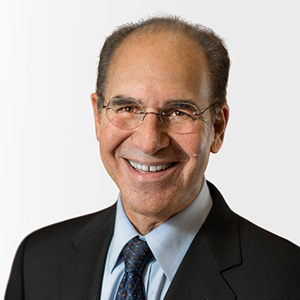If you’re suffering from back pain, artificial disc replacement (ADR) surgery could be an option for relief.
Simply stated, artificial disc replacement is a surgical procedure that involves removing a painful disc in the spine and replacing it with an artificial disc. This surgical innovation can be an excellent treatment for many patients suffering from chronic, severe low back, leg/arm pain and/or numbness and weakness caused by degenerative disc disease or a herniated disc.
“Artificial disc replacement is one of the greatest technologies in spine surgery to come along in recent years,” said Richard Guyer, a spine surgeon and Co-Director of the Center for Disc Replacement at Texas Health Center for Diagnostics and Surgery in Plano. “It gives patients a new and effective option for treating common spine conditions.”
One of the most anticipated advances in spine surgery in recent decades, artificial disc replacement is a relatively newer procedure. The first artificial disc in the U.S. received formal approval by the Food and Drug Administration (FDA) in 2004, following a four-year clinical trial. By that time, the technology had been in use in Europe for almost 20 years.
Not everyone is a candidate for this surgery, but for those who are, ADR can provide significant and immediate relief from the pain, tingling, and loss of mobility resulting from a degenerative or herniated disc.
How ADR Surgery Works
Discs are the soft, fleshy parts that act as shock absorbers between the vertebrae (the bones of the spine) and allow a wide range of motion. As we age, these discs naturally degenerate, becoming dry and stiff. This doesn’t lead to pain or loss of mobility in everyone. But for some people, this degeneration causes pain in the lower back, sometimes radiating to the legs. In the cervical or neck region, disc degeneration may cause numbness and tingling in the arms, pain radiating down the arms, and even loss of motor function.
ADR surgery may be performed in the lower back (lumbar spine) or the neck (cervical spine) area. Artificial discs are designed to mimic the form and function of the spine's natural disc. The goal is to alleviate pain by removing the painful degenerated or herniated disc, stabilizing the spine, minimizing inflammation and allowing for a more natural motion in the spine.
“Basically, in ADR, we remove the entire disc that’s causing problems, whether in the neck or the low back,” said Guyer. “We are very, very careful to retrieve any disc fragments compressing the nerves, because that’s what’s causing the arm or leg pain.”
Disc replacement surgery is performed using minimally invasive techniques, with the patient under general anesthesia. An incision is made in the front of the abdomen, or the neck, depending on the problem area. In most cases, the surgeon does not need to cut any muscles to access the area. The surgeon then removes the damaged disc and inserts the artificial disc. Disc replacement surgery usually takes one or two hours.
Each artificial disc is customized to the individual patient. The surgeon uses series of devices to measure and assess the size of the space between the affected vertebral bodies, to ensure the device is properly sized and fitted.
“We try to get the perfect fit and size for the individual patient,” said Guyer. “Each artificial disc is fitted specifically for each patient.”
Using real time fluoroscopy (a live x-ray), the surgeon places the artificial disc. Tissues and blood vessels are returned to their normal positions and the wound is closed with sutures.
ADR Offers Advantages over Spinal Fusion
For patients whose only options in the past would’ve been spinal fusion surgery, artificial disc replacement offers a better alternative for many patients.
“With a disc replacement, we actually replace the disc with a moving mechanical disc,” said Guyer. “Whereas previously, our option was to do a fusion, which limits range of motion. FDA studies plus other long term data tell us there’s much less chance of having additional surgery after artificial disc replacement, compared to fusion surgery.”
Spine fusion is the traditional surgical treatment for degenerative disc disease. In this procedure, the affected part of the spine is immobilized by fusing together two adjacent vertebrae, typically using bone grafts along with screws, rods, or plates.
ADR offers several advantages over fusion:
Maintained mobility. With spinal fusion, the goal is to reduce lower back pain by eliminating painful movement between two vertebrae. By contrast, disc replacement relieves pain while maintaining that spinal flexibility and range of motion. Because the artificial disc maintains motion in the spine, FDA data shows, the chance of new problems or disease in adjacent segments of the vertebrae decreases.
Faster recovery. Fusion surgery can involve a longer stay in the hospital. Patients typically use a collar or brace for a period of time after surgery. Hospital stays are shorter with ADR – in some cases, it’s done as an outpatient procedure. Additionally, study data indicates that artificial disc replacement requires a relatively short recovery time, allowing patients to return to activity more quickly after surgery.
Less likelihood for future surgery. Because disc replacement allows for mobility in the spine it does not put as much stress on adjacent levels of the spine. Research shows patients with spinal fusion surgery are more likely to experience adjacent level degeneration, which can lead to the need for additional surgical intervention.
Who’s A Candidate for ADR?
Are you a candidate for ADR? The answers is usually a complicated one, depending on the type of disc problem you have. Keep in mind that choosing an experienced physician is important for ensuring the best possible outcome.
As with most other types of spine surgery, doctors generally don’t recommend artificial disc replacement until less invasive treatments – such as physical therapy or spinal injections – have been tried, without success. Usually, doctors advise patients to try nonsurgical options for a minimum of 6 months. That’s because back/neck pain can sometimes resolve on its own after a few months. In some cases, it may be managed with medications, physical therapy or injections. For cases that don't respond to treatment, surgery may be the best option.
“Our ADR patients are not getting better with conservative treatment,” said Guyer. “These are patients with chronic low back pain, who tell us that their activities of daily living have become more and more difficult. They have trouble bending over to tie their shoes. Simple household chores, like bending forward or brushing teeth, are painful and difficult.”
Before artificial disc replacement, patients must undergo is a rigorous diagnostic process, including an imaging scan to pinpoint the source of the pain.
Is ADR surgery right for you? Not everyone is a candidate for ADR surgery, but that’s a question to ask in consultation with a spine surgeon.
“If you're interested in disc replacement, go to a spine surgeon who specializes in disc replacement,” Guyer advises. “Discuss whether you might be a candidate. Not everybody is, but we're finding that more and more patients are candidates.”
As with any surgery, it’s important to choose a surgeon with plenty of experience. Dr. Guyer and co-directors at the Center for Disc Replacement at Texas Health Center for Diagnostics and Surgery have completed spine fellowships (the highest level of surgical training available). They have been performing minimally invasive spine surgery techniques for many years. They were even instrumental in bringing artificial disc replacement surgery to the United States after its creation and use in Europe.
“My treatment philosophy is to treat my patients the way I would want myself or my family members to be treated. I always utilize what I like to refer to as the ‘family test’ when advising treatment and surgical options for my patients.”
Recovery from Disc Replacement Surgery
After the surgery, your surgeon may recommend pain medications, heat or ice therapy. Physical therapy after spinal surgery to help strengthen the back. That may include stretching, core strengthening, and aerobic exercises targeted for the back. In addition, walking is a helpful post-operative activity. Patients should work with their surgeon and physical therapist to determine the most appropriate exercises after disc replacement surgery. Typically, patients start with several short walks each day and build up to longer periods of time. Unlike spinal fusion, disc replacement doesn’t require a bone graft. Patients do not need to wait for bone to heal, allowing them to resume normal activities more quickly. Patients activity levels are gradually increased during the 12 weeks following surgery.
If you’re a candidate for artificial disc replacement, this surgical option can get you back to doing what you love faster. Recovery from ADR surgery is typically accelerated as compared to conventional spine surgery. Most patients are up and walking the day of surgery.
“The vast majority patients are home the first day after surgery,” said Guyer. “Some even leave the hospital the same day as surgery. Depending on how they feel, most patients can return to a light duty job after a week or two. For many patients, this surgery gives them back their lives.”
If you are ready to make an appointment, let us know and we will be Happy to Assist you.


